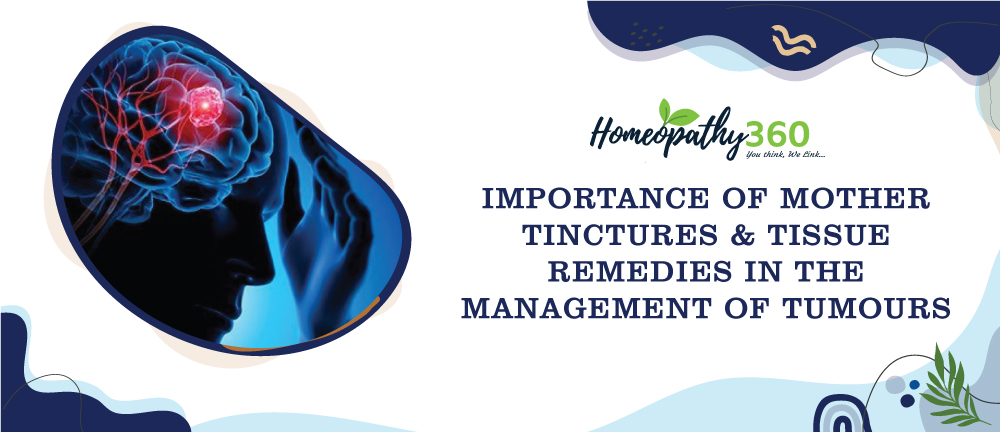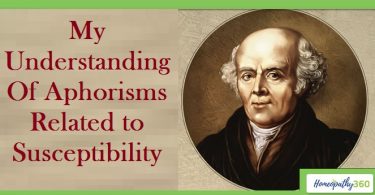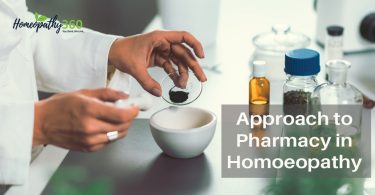
ABSTRACT-
Tumour is ‘a mass of tissue formed as a result of abnormal, excessive, uncoordinated, autonomous and purposeless proliferation of cells even after cessation of stimulus for growth which caused it.’[1] The fundamental abnormality resulting in the development of cancer is the continual unregulated proliferation of cancer cells. Rather than responding appropriately to the signals that control normal cell behaviour, cancer cells grow and divide in an uncontrolled manner, invading normal tissues and organs and eventually spreading throughout the body. Homoeopathy is among the most famous alternative system of medicine. Homeopathy recognizes the individuality of each patient. Homoeopathic mother tinctures and tissue remedies can help the patient very effectively and it can help these patients to improve their quality of life.
KEYWORDS-
Homoeopathy, tumours, palliation, mother tincture, tissue remedies.
INTRODUCTION-
Tumour is ‘a mass of tissue formed as a result of abnormal, excessive, uncoordinated, autonomous and purposeless proliferation of cells even after cessation of stimulus for growth which caused it.’[1] The fundamental abnormality resulting in the development of cancer is the continual unregulated proliferation of cancer cells. Rather than responding appropriately to the signals that control normal cell behaviour, cancer cells grow and divide in an uncontrolled manner, invading normal tissues and organs and eventually spreading throughout the body. The generalized loss of growth control exhibited by cancer cells is the net result of accumulated abnormalities in multiple cell regulatory systems and is reflected in several aspects of cell behaviour that distinguish cancer cells from their normal counterparts.[2] Neoplasms may be ‘benign’ when they are slow-growing and localised without causing much difficulty to the host. [1] A tumour is said to be benign when its gross and microscopic appearances are considered relatively innocent, implying that it will remain localized, will not spread to other sites, and is amenable to local surgical removal; understandably, the patient generally survives. However, “benign” tumours may cause significant morbidity and are sometimes even fatal. [3] Or ‘malignant’ when they proliferate rapidly, spread throughout the body and may eventually cause death of the host. The common term used for all malignant tumours is cancer. [1] Malignant tumours are collectively referred to as cancers, derived from the Latin word for crab, because they tend to adhere to any part that they seize on in an obstinate manner. Malignant tumours can invade and destroy adjacent structures and spread to distant site (metastasize) to cause death. [3]
Cancer cells are psychopaths. They have no respect for the rights of other cells. They violate the democratic principles of normal cellular organisation. Their proliferation is uncontrolled; their ability to spread is unbounded. Their inexorable, relentless progress destroys first the tissue and then the host. In order to behave in such an unprincipled fashion, cells have to acquire a number of characteristics before they are fully malignant. [4]
Characteristics of tumours: –
- Differentiation and anaplasia: lack of differentiation, or anaplasia, is considered a hallmark of malignancy. [3]
- Pleomorphism: cancer cells often display pleomorphism—variation in size and shape. thus, cells within the same tumours are not uniform, but range from small cells with an undifferentiated appearance, to tumours giant cells many times larger than their neighbours. [3]
- Abnormal nuclear morphology: characteristically, the nuclei are disproportionately large for the cell, with a nuclear-to-cytoplasm ratio that may approach 1: 1 instead of the normal 1: 4 or 1:6. [3]
- Mitoses: unlike in benign tumours and some well differentiated malignant neoplasms, in undifferentiated tumours, many cells are in mitosis, reflecting the high proliferative activity of the parenchymal cells. [3]
- Loss of Polarity: In addition to the cytologic abnormalities, the orientation of anaplastic cells is markedly disturbed. Sheets or large masses of tumours cells grow in an anarchic, disorganised fashion. [3]
- Metastasis: Metastasis is defined by the spread of a tumours to sites that are physically discontinuous with the primary tumours, and unequivocally marks a tumours as malignant, as by definition benign neoplasms do not metastasise. Dissemination of cancers may occur through one of three pathways: (1) direct seeding of body cavities or surfaces, (2) lymphatic spread, and (3) haematogenous spread. [3]
EPIDEMIOLOGY OF CANCER
Cancer is the second leading cause of death globally, and is responsible for an estimated 9.6 million deaths in 2018. Globally, about 1 in 6 deaths is due to cancer. Around one third of deaths from cancer are due to the 5 leading behavioural and dietary risks: high body mass index, low fruit and vegetable intake, lack of physical activity, tobacco use, and alcohol use. [5]
In India, one woman dies of cervical cancer every 8 minutes. For every 2 women newly diagnosed with breast cancer, one woman dies of it in India. Estimated number of people living with the disease is around 2.25 million. Every year, new cancer patients registered are Over 1,157,294 lakh. Total deaths due to cancer in 2018 were 784,821 out of which Men were 413,519 and Women were 371,302. Risk of dying from cancer before the age of 75 years is 7.34% in males and 6.28% in females. The top five cancers in men and women account for 47.2% of all cancers. [6]
HOMOEOPATHY AND ITS MANAGEMENET IN CANCER
Homoeopathy is among the most famous alternative system of medicine. In Europe, Homoeopathy is used in cancer care extensively from 6% in cancer diagnosis and almost 24% in breast cancer females. Homoeopathy is most commonly used complementary and alternative medicine (CAM) in paediatric oncology in Germany and patient satisfaction with homoeopathic treatment is very high. [7] Homoeopaths treat disease using very low dose preparations administered according to the principle that “like should be cured with like.” Practitioners select a drug that would, if given to a healthy volunteer, cause the presenting symptoms of the patient. [8] Homoeopathy recognises the individuality of each patient. The entire examination of a patient is conducted with a view to discover not only the common symptoms of a case/disease by which it may be classified diagnostically and pathologically, but the special and particular symptoms which differentiate the case from others of the same general class are sought to find out the individuality of the patient. [9]Once the individuality of patient is established, medicine similar with the patient as a whole is selected with the help of homoeopathic materia medica. Homoeopathy can also be used as a supportive or palliative treatment. As a palliative and supportive approach, homeopathy is used to develop general health and to relieve the pain and suffering resulting from other orthodox treatment [7] such as in incurable cases or cases with advanced pathology or cases undergoing chemotherapy – radiotherapy. In inoperable cases like carcinoma of the liver, advanced carcinoma of the head of the pancreas, lungs, oesophagus, etc. palliative medicinal treatment should be the method of choice. Symptomatic palliative medicines are to be administered taking special care of diet, regimen and psychotherapy. It may so happen that the patients improve nicely with this palliative treatment and a stage may come when constitutional treatment may safely be started. Peaceful death, prolongation of life and a meaningful existence are the result of such studies. [10] Homoeopathy can help these patients to improve their quality of life. In such cases, homoeopathic mother tinctures and tissue remedies can help. When the patient’s vitality is low, he need a lower potency or cases having lower similarity with medicine, lower the potency is required or cases with low susceptibility respond to tinctures very well. [11] Tincture is not a crude dose, but the initial potency made from the crude drug substance. Even though the mother tinctures contain material doses of active principles, they are having a power, higher than the crude extract. [11] Tissue remedies can also help in the management of cancer. The idea upon which biochemic therapeutics is based is the physiological fact that both the structure and vitality of the organs of the body are dependent upon certain necessary quantities and proper apportionment of its organic constituents. According to Schüssler’s theory, any disturbance in the molecular motion of these cell salts in living tissues, caused by a deficiency in the requisite amount, constitutes disease. [12]
Some important mother tinctures in management of tumours
- Baryta iodatum Q- Acts on the lymphatic system, increases leucocytosis. Indurated glands, especially tonsils and breasts, tumefaction of carnical glands and stunted growth. Tumours. [14]
- Calendula officinalis Q External- Its lotion is beneficial in cancerous ulcers. [14]
- Cardus marianus is for rectal cancer. [13]
- Cedron can be used to reduce the lancinating pains of cancer. [13]
- Cicuta virosa for epithelial cancer. [13]
- Chimaphila umbellata is for breast tumours, not ulcerated, with undue secretion. [13]
- Cholestrinum is efficacious in liver cancer. [13]
- Cinnamonum in cancer where pain and fetor are present. Strong decoction, one half pint a day. [13]
- Cundurango is for cancer of stomach. [13]
- Galium aparine has power to suspend or modify cancerous action. Favours healthy Granulation on ulcerated surface. [13]
- Fraxinus americana- useful for uterine tumours, fibrous growth and distressing backache. [14]
- Hecla lava is a bone cancerous remedy. [13]
- Hydrastis canadensis- it is indicated in cancer and precancerous states, before ulceration when pain is the principal symptom, scirrhous tumours. Developing in glandular tissue, tumours of breast ulcers and cancerous formations on skin, cancer of soft palate, cancer of last part of the intestine. It is also indicated when Arsenicum album fails in cancer with intense burning. [13]
- Hydrocotyle asiatica is for granular cancer of uterus. [13]
- Ova tosta has cured cases of cancer of os uteri. [13]
- Phytolacca decandra is useful in breast tumours. [13]
- Ruta graveolens is for gangrenous tumours and cancer of bones. [13]
- Sempervivum tectorum- malignant ulcers of mouth. cancer of tongue. [13]
- Symphtum officinale is efficacious in treating cancer due to injury. [13]
TISSUE REMEDIES IN CANCER AND THEIR INDICATION-
- CALCAREA FLUORICA- Indications for this medicine are solidified infiltrations, i.e. indurated glands of stony hardness, osseous growths, and tumours in the female breast, swellings or indurated enlargements, indolent ulcer, ulceration of bone or enamel, bone injected. Caries and necrosis, with burning, boring pains and heat in parts with discharge of thin, acrid, ichorous mucus.[12]
- CALCAREA PHOSPHORICA- This salt is found in the blood-plasma and corpuscles. It also supplies new blood-cells, becoming the first remedy in anaemia and chlorosis. [12]
- CALCAREA SULPHURICA- It cures purulent discharges from the mucous membranes and purulent exudations in serous sacs, as well as tubercular ulcers or abscesses of the intestines, and ulcers of the cornea, etc. It is indicated in ulcerations of the glands and malignant growths after ulceration has set in. [12]
- FERRUM PHOSPHORICUM- Its field of action is in pain, heat, swelling and redness, quickened pulse and increased circulation; in anaemia, want of red blood, etc. It is especially useful in failing appetite, becoming dull and listless, loss of weight and strength. Ferrum phosphoricum not only improves the strength, but helps to increase the bodily development and regulates the bowels. It is indicated in haemorrhages from any part of the body; blood bright red, with a tendency to coagulate rapidly, Dropsy from loss of blood and draining of the system. [12]
- KALI MURIATICUM- It is indicated in ulcers in the mouth, on tonsils and in throat, loss of appetite, vomiting of clotted blood, red deposits in urine, gonorrhoea and gleet, hard lumps in breast, glands swollen and inflamed, ulceration of the os and cervix uteri, with the characteristic discharge of thick, white, bland secretions, Haemorrhages in it are dark, black, clotted, or tough blood. [12]
- KALI PHOSPHORICUM- It is indicated in anxiety, nervous dread without any special cause, gloomy moods, fancies, looks on the dark side of everything, dark forebodings, dullness, want of energy, the slightest labour seems a heavy task, Effects of fright, after-effects of grief, profound hypochondria and melancholia, sighing, depression. Dr. George Royal in his provings finds irritability, nervousness, depression, drowsiness, inability to remember and restlessness prominent mental symptoms. [12]
- NATRIUM MURIATICUM- It causes a deterioration of the blood and other vital fluids, partaking of a scorbutic nature, giving rise to inflammation, going on to ulceration and producing distinct dyscrasia. It helps in malnutrition and emaciation. It helps in anaemia, leukaemia, hydraemia, chlorosis and scorbutus, anasarca, accumulation of serum in the areolar tissues, dropsy or dropsical swelling, puffiness of the tissues, serous or watery exudations, serous secretions. [12]
- NATRIUM PHOSPHORICUM- Sour eructations, sour vomiting, greenish diarrhoea, pains, spasms, and fever with acid symptoms, etc. Natrum phosphoricum possesses the power to free the leucocytes and thereby again enabling them to carry on their specific function, thus helps in leukaemia. It also helps in swelling of lymphatic glands before hardening, marasmus of children, jaundice. [12]
- SILICEA- It is indicated in inflammatory swelling, ulceration and necrosis of bone, malignant and gangrenous inflammations, enlarged suppurating glands, especially cervical glands, dropsy. Discharges and excretions are offensive. Ulcers, with proud flesh, putrid, acrid ichorous discharge. [12]
CONCLUSION
Cancer is a life-threatening condition but many of the patients die due to the after effects of radiotherapy or chemotherapy or due to the shock of having cancer. Homoeopathic medicine can help patient in this condition by minimising the after effect of therapies and helping in the modification of mental states. Mother tincture and tissue remedies can also help in improving quality of life, extending life expectancy and can help in controlling the metastasis or remission of tumour.
REFERENCES
- Mohan H. Textbook of pathology. 6th edition.New Delhi: Jaypee brotrhers medical publishers [P] Ltd; 2010.
- Cooper GM. The Cell: A Molecular Approach. 2nd edition. Sunderland (MA): Sinauer Associates; 2000. The Development and Causes of Cancer. Available from: https://www.ncbi.nlm.nih.gov/books/NBK9963/
- Klatt CE, Kumar V. Robbins and Cotran Review of Pathology. Fourth Edition. Philadelphia: Elsevier Saunders; 2015
- Williams NS, Bulstrode CJK, O’Connell PR. Bailey & Love’s Short Practice of Surgery. 25th Ed. London: Hodder Arnold, an imprint of Hodder Education, Hachette UK company.
- Available from: https://www.who.int/news-room/fact-sheets/detail/cancer
- Cancer Statistics. Available From: http://cancerindia.org.in/cancer-statistics/
- Ahmad S, Rehman T, Abbasi WM. Homoeopathic approach for the treatment of cancer. Indian J Res Homoeopathy [serial online] 2018 [cited 2019 Jul 9];12:157-63. Available from: http://www.ijrh.org/text.asp?2018/12/3/157/242285
- Vickers A, Zollman C. ABC of complementary medicine. Homoeopathy. BMJ. 1999;319(7217):1115–1118. doi:10.1136/bmj.319.7217.1115
- Bhatia M. Individualization[internet]. 2004 Feb 15. Available from: https://hpathy.com/organon-philosophy/individualization/
- Mondal TC. Spirit of The Organon A Treatise on Organon of Medicine Include Flow Charts, Important Theoretical & Objective Type Questions Part 2. New Delhi: B. Jain Publishers (P) Ltd. Reprint edition: 2006,2007.
- Rafeeque M. Useful Mother Tincture In Homoeopathic Practice [internet].2017 August 21. Available From: https://www.similima.com/useful-mother-tinctures-homoeopathic-practice/
- Boericke W, Dewey WA. The 12 tissue remedies of schussler. 6th edition. New Delhi: b. jain publisher [P] Ltd; 2010 Pg.15, 42-43, 44, 57, 60, 63, 70.
- Boericke W. Boericke’s New Manual of Homoeopathic Materia Medica with Repertory. New Delhi: B. Jain Publishers (P) LTD. 3rd revised & augmented ed.; 2010.
- Sinha Y. Miracles of mother tinctures with therapeutic hints and treatment of diseases. 30th impression. New Delhi: B. Jain Publishers (P) LTD;2014.
About Author:
Dr Yogeshwari Gupta
Prof. MD (Homeo), Dean, Faculty of Homoeopathy,
Rajasthan Ayurved University, Jodhpur, Rajasthan.
Principal, S.K. Homoeopathic Medical College & Research Centre,
Jaipur, Rajasthan.
Dr Bharat Sharma
MD (PGR), Paediatrics
S.K. Homoeopathic Medical College & Research Centre,
Jaipur, Rajasthan.
Dr Gaurav Gupta
MD (PGR), Repertory
S.K. Homoeopathic Medical College & Research Centre,
Jaipur, Rajasthan.





